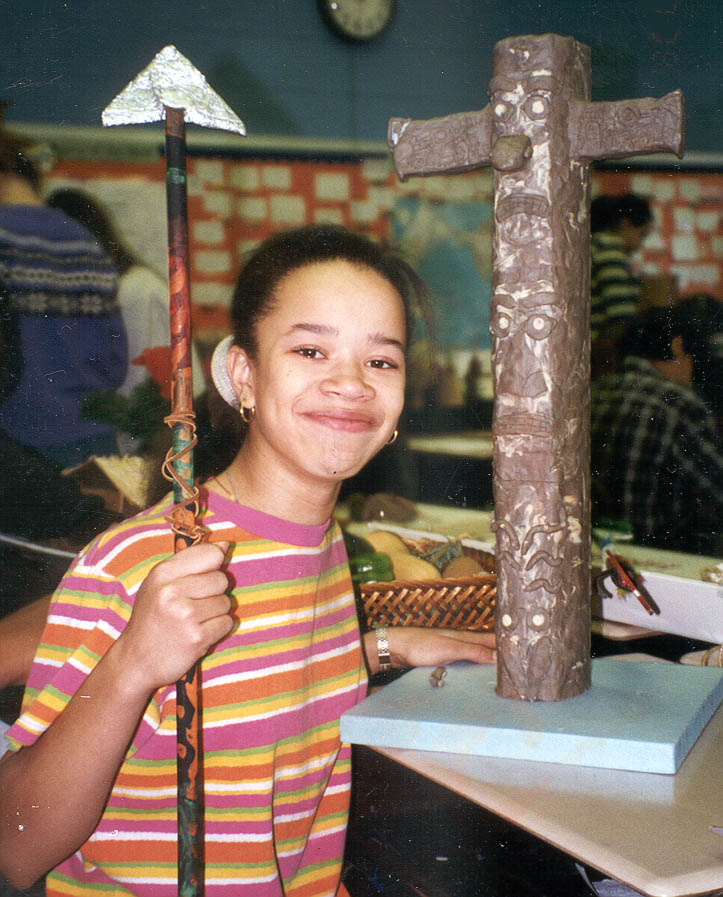Enlivening Social Studies to Meet the Test
Andi Stix was interviewed by Donna Green from the New York Times on why Social Studies instruction needs improvement.
 Coming soon from the same people who brought New York students new tests in reading and math – a new test for social studies. The tests are mandated by the Board of Regents and are aimed at raising academic standards. For fifth-graders, the test is to be given this year, although there is talk of delaying it a year; for eighth-graders, the test will begin next year…
Coming soon from the same people who brought New York students new tests in reading and math – a new test for social studies. The tests are mandated by the Board of Regents and are aimed at raising academic standards. For fifth-graders, the test is to be given this year, although there is talk of delaying it a year; for eighth-graders, the test will begin next year…
Dr. Stix grew up in Harrison and runs the Gifted and Talented Enrichment Center, known as Gtec Kids, in New Rochelle, NY. She has trained teachers and parents in Pelham, New Rochelle, Greenburgh, Scarsdale, Chappaqua, Dobbs Ferry, and Hastings-on-Hudson as well as in Wyoming and Texas. Here are excerpts from a conversation with Dr. Stix:
Q: Generalizing, why are improvements needed in social studies?
A: Basically, you run the gamut of why kids love or hate social studies. Students generally hate social studies when it becomes a form of memorization, where there is very little application. So the questions become, “How can we get students to make connections with things that took place historically to things on their own minds and to their community? How can we get students to understand that the problems and situations that existed many years ago can be solved using similar strategies that are used today?”
Q: By social studies, do you mean basically history or other things like geography?
A: We’re dealing with all of them. If you’re studying the Babylonian trade system, for example, obviously the students have to be well versed in how the people would move from one location to the next. If we’re dealing with European exploration, the students become the explorers and they have to chart, in journal-writing fashion, everything that took place.
Q: What prompted you to do this series?
A: I wanted to put life back into social studies, and I wanted students to learn to take multiple perspectives on issues. So we create forums where students simulate a congressional hearing and different groups of students become different lobbying spokespeople for that group.
Let’s say they’re studying the Lakota Indians and what should be done during westward expansion. We will have the “railroad people” speak. We will have the “business” people speak, and the “Lakota” people speak. We will have the “homesteaders” speak. The students will understand that there were many points of view. And they can try to come up with a decision and then compare their decision with the actual decision that was made back then…
In the [Exploring History] series, we always give each student a background sheet, using a multiple-perspective approach. Then we ask the kids to go beyond that, and that’s very difficult to do. But now with the Internet, the kids get on whatever search engine and they can type Lakota Indians. They can type homesteaders, and a whole host of wonderful resources become available from primary source documents, journal letters, and everything else. And that way, they come in for the simulation more empowered with specifics and documentation.
Q: What is New York State’s new social studies like?
A: The middle school exam – each level is different – will be given at the end of eighth grade, and the test will be instituted in June 2001. The state is not doing anything this year because they want teachers to prepare for it.
The test will consist of three basic sections. The first will be multiple choice. The second will be three to four constructed response questions where students will have to analyze a graph or design a graph with the information they have been given. The third section is called a document-based section. The state is going to find primary source documents – it could be a letter, an advertisement, a section of someone’s journal, a speech – and they will give the students one from each of these multiple perspectives and ask for a short answer from the students while they’re looking at this primary source document.
Then there will be an essay question, where the students will have to use every one of those multiple perspectives and will have to synthesize the information in a productive way. And they have to use a proper introduction, supporting paragraphs, and a conclusion.
Q: So the new social studies approach is an effort to test thinking as opposed to just memorization?
A: Both. You can’t say one or the other. You have to come to the table proving that you’ve learned something in school and some of that is memorization. But you must also show that you can use higher-level thinking skills. The language arts component that will be part of the social studies exam is very evident.
Q: Even the state math exams require students to explain in words how they got the answer.
A: Exactly, and that’s what our series is about, using language arts throughout the content areas because we want to increase literacy. So if we go back to the original example, what to do with the Lakota Indians, we want them to read. We want them to use their inquiry skills. The point of the series is to increase literacy through reading, writing, speaking, and listening – being good active listeners, which means you have to listen carefully so you can respond.
Q: Where does historical fiction fit in with teaching social studies?
A: There is a book called, Young Adult Literature, [part of the Exploring History series] and it is basically a list of books for teachers to use from ancient civilization to American history that comes from the approach of a young adolescent. So we want students to engage themselves, to have them pretend they are actually living during that time. And what we have found is that when students read about other children of a similar age group, they can relate to them better and they can see themselves in that position.
Q: It has often been recalled that Anne Frank had fights with her parents in hiding…
A: That’s right. And those kinds of issues are important to students. What we want to do is engage students in as many different avenues as possible.
Q: Where do current events fit into a good social studies curriculum?
A: Part of a wonderful social studies curriculum, for example, is if you are teaching Lakota Indians and the westward movement, you say: “What is happening today with Native American people? What are the current issues?” And because of the Internet, because of newspapers, there is so much out there… Students are much more able to make connections with content today if they have a basis of understanding where these people came from in their history, in our society.
Q: Teachers, like children, come in all varieties and abilities. How much can you improve a so-so teacher?
A: It all depends on the philosophy of the district. If the philosophy of the district is to bring a consultant in for one day, conduct a workshop, not much is going to change. On the other hand, if you have someone constantly come in and work with the teachers on staff development, I think there are possibilities there.
I really like the changes I’m seeing at the state level as well as at the local level. They are becoming much more student-centered. For the first time, I think people are beginning to focus more and more on social studies. You live social studies when you walk out of the house every day. It’s engagement with people. It’s what has happened. Your life is social studies.
By Donna Greene, The New York Times, Sunday, March 5, 2000
 In what ways have you tied your Social Studies content to the lives of your students? For what reasons do these connections increase student motivation? In what ways does your district provide professional development that is meaningful, on-going, and long-term? Compare and contrast one-day workshops to sustainable professional development.
In what ways have you tied your Social Studies content to the lives of your students? For what reasons do these connections increase student motivation? In what ways does your district provide professional development that is meaningful, on-going, and long-term? Compare and contrast one-day workshops to sustainable professional development.
Andi Stix is an educational consultant & coach who specializes in differentiation, interactive learning, writing across the curriculum, classroom coaching, and gifted education. For further information on her specialties or social media, please email her on the contact page.





